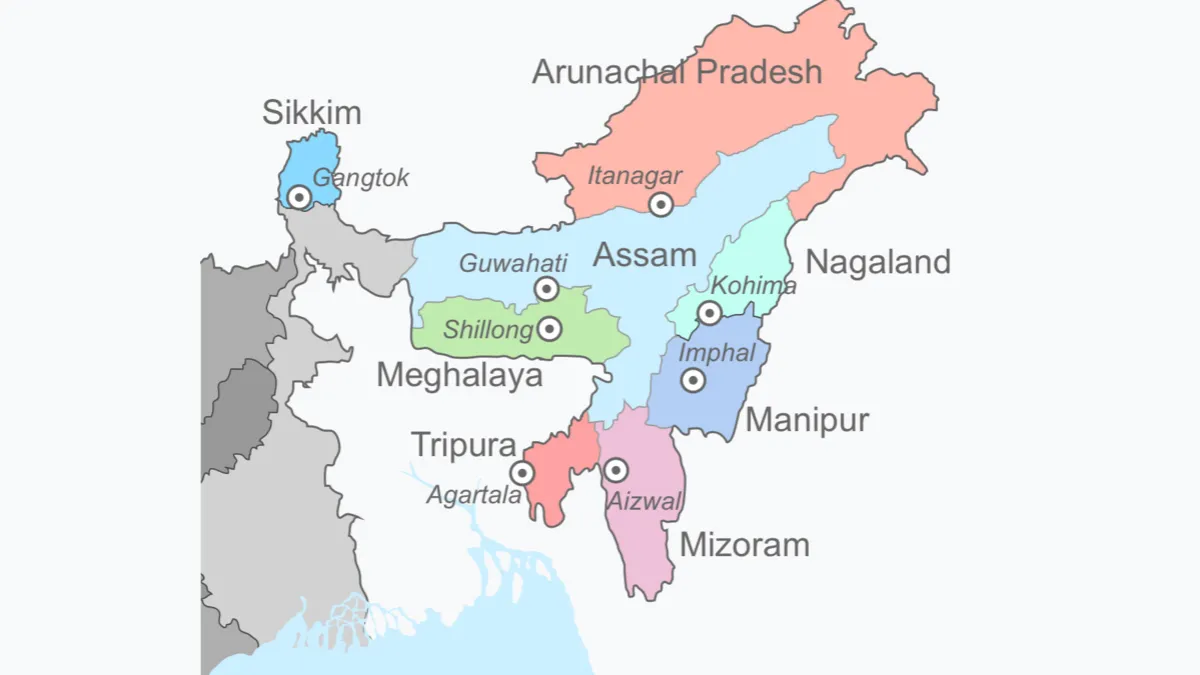Researchers and specialists have recorded several small life forms from the northeast of India
18 Nov 2023
News
In the northeast of India, zoological discoveries have been abundant this season, ranging from moths to a gecko. After years of examining samples, scientists have identified a number of tiny living creatures from the area.
In the journal Bionotes, Stefan Naumann, an associate of the Museum für Naturkunde in Berlin, and Peter Smetacek, of the Butterfly Research Centre in Bhimtal, described eleven emperor moth (Saturniidae) species that were previously unknown to science. Nine of these come from Assam and Arunachal Pradesh.
Among these are the moon moths known as the Mishmi (Actias smetaceki) found in Arunachal Pradesh and the Shan (Actias loeffleri) found in northern Myanmar. According to Mr. Smetacek, "their name has been derived from a moon on each of its wings."
With a wingspan of 13.6 cm, Loepa himalayana, which is located in Tibet and Arunachal Pradesh, is the biggest of the 11 moths known to exist.
About 100 of the more than 1,300 species of moths in the Saturniidae family—which includes emperor moths—are known to exist in India.
Alcalus fontinalis, a newly discovered frog from Namdapha, Arunachal Pradesh, got its name from the little brooks or streams where it was discovered in May 2022. This frog has been characterised as having wrinkled skin and dilated toes by a team led by Abhijit Das of the Wildlife Institute of India.
Bitupan Boruah, Surya Narayanan, Jason D. Gerard, and V. Deepak were the other members of the team.
The researchers said that prior to their discovery in the Philippines and Thailand, frogs belonging to the Alcalus genus were unknown in India.
The Alycaeus himalayae snail, which was discovered in a tiny limestone cave in the East Siang district, was another discovery made in Arunachal Pradesh. The snail was discovered by a group at the Ashoka Trust for Research in Ecology and the Environment, under the direction of Neelavar Ananthram Aravind of the SM Sehgal Foundation Centre for Biodiversity and Conservation.
According to the experts, it is the only species of Aycaeus that lives in the Himalayas. The remaining snails of this genus that have been identified have been found in Laos, Vietnam, southern Thailand, and Peninsular Malaysia.
Cycloryx pemaledai, a different newly discovered species of snail, has also been documented from Sikkim.
Examining specimens taken between 1993 and 2019, researchers from Kalyani University and the Zoological Survey of India discovered 19 new species of scarab beetles from Mizoram. The group including of Devanshu Gupta, Piyanka Ghosh, Joyjit Ghosh, Debika Bhunia, and Subhankar Kumar Sarkar.
The family Scarabaeidae, which also contains plant-eating beetles and dung beetles (sometimes known as coprophagous scarabs) is where scarab beetles are classified.
The most recent discovery was the bent-toed gecko Cyrtodactylus vairengtensis, which was named after the Vairengte region of Mizoram where it was first observed. The Zootaxa journal released a report on this new species.
